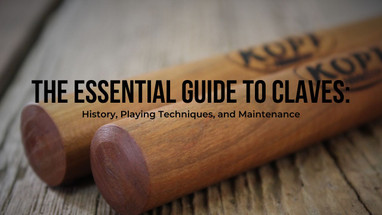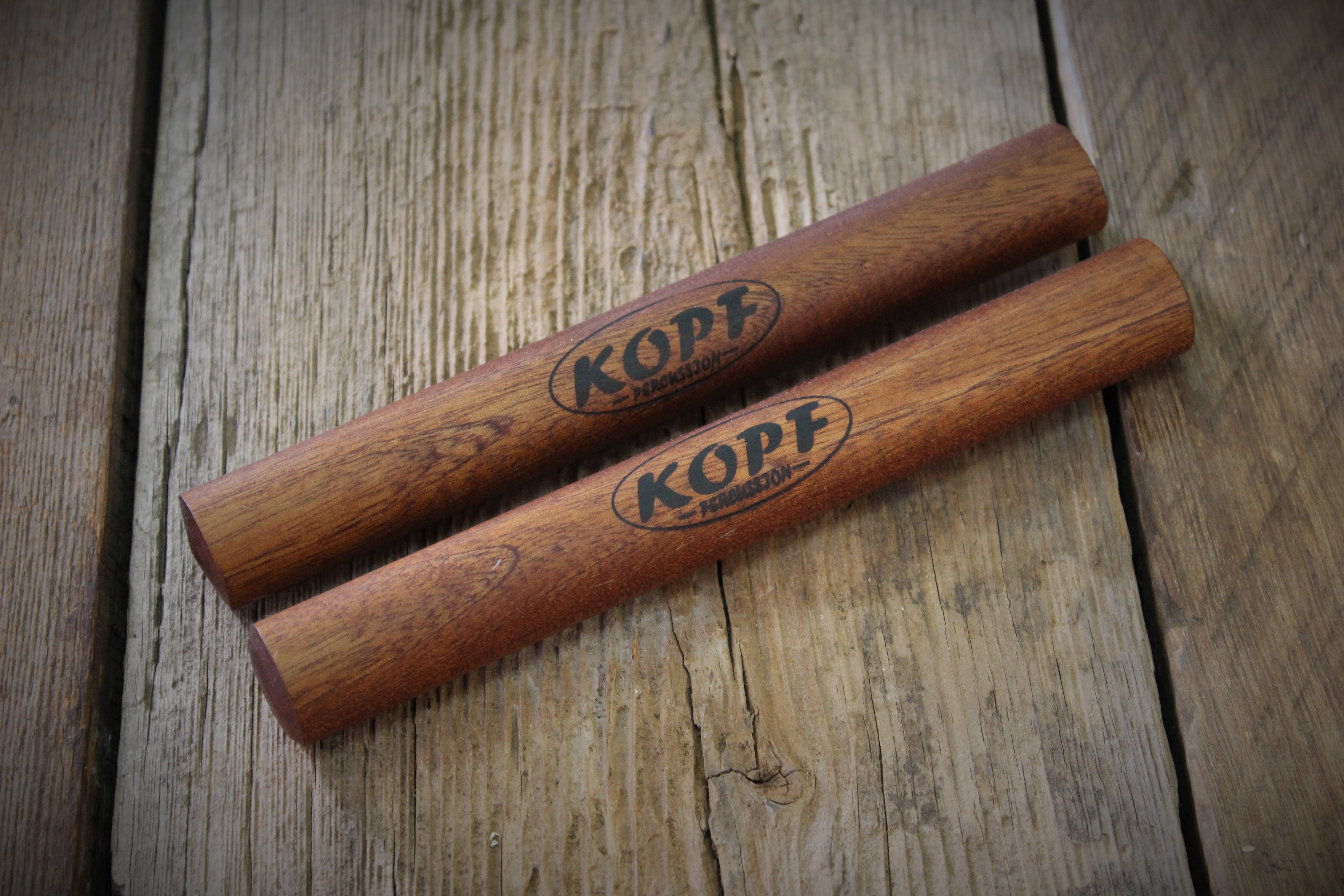Posted by Steve Head on 23rd Jun 2024
The Essential Guide to Claves: History, Playing Techniques, and Maintenance
As the owner of Kopf Percussion, I'm passionate about exploring and sharing the rich history and versatility of percussion instruments. One such instrument that holds a special place in many musical traditions is the claves. In this post, I’ll dive into the history, playing techniques, and maintenance tips for claves, ensuring you can make the most of this simple yet remarkable instrument.
Check Out Claves from Kopf Percussion
History of Claves
Claves are percussion instruments that consist of two cylindrical wooden sticks struck together to produce a sharp, bright sound. Their origins trace back to Africa, and they were brought to the Caribbean and Latin America during the transatlantic slave trade. Over time, claves became integral to Afro-Cuban and Latin American music, serving as the rhythmic backbone in genres like rumba, son, mambo, and salsa.
Initially, claves were likely created from wooden pegs used in shipbuilding in Cuban harbors, evolving into the instrument we recognize today. The claves' rhythm, known as the clave pattern, is crucial in maintaining the timing and structure of various musical styles, making it a foundational element in Afro-Cuban music.
Playing Techniques
Despite their simple appearance, playing the claves involves mastering several techniques to produce the desired sound and rhythm.
- Basic Grip and Strike: Hold one clave in your non-dominant hand, resting it across your palm and securing it with your fingers. Hold the other clave in your dominant hand and strike it against the resting clave, aiming for the sweet spot to produce a clear, resonant sound.
- Traditional Cuban Style: In traditional Cuban playing, cup one clave in your left hand and strike it with the right hand, adjusting your grip to modulate the sound. This method allows for more control and variation in the sound produced.
- Resonance and Modulation: Experiment with holding the claves more or less tightly, changing the point of contact to vary the tone. Holding the claves loosely will produce a more resonant sound, while a tighter grip will result in a sharper, shorter note.
- Clave Patterns: Learn the different clave rhythms, such as the son clave and the rumba clave. Each pattern consists of five strokes spread over two measures, creating a rhythmic framework essential for many Latin music styles.
Famous Musicians and Uses
Claves have been used by numerous famous musicians across various genres. Notable names include Tito Puente, Mongo Santamaria, and Carlos "Patato" Valdés, who have incorporated claves into their music, showcasing their importance and versatility.
In addition to traditional Latin genres, claves have found their way into jazz, rock, and even orchestral music, demonstrating their adaptability and unique contribution to different musical landscapes.
Maintenance Tips
To ensure your claves produce the best sound and last for years, proper maintenance is crucial.
- Regular Cleaning: Wipe your claves with a dry cloth after each use to remove sweat and oils that can affect the wood. Avoid using harsh chemicals that could damage the surface.
- Proper Storage: Store your claves in a cool, dry place away from direct sunlight to prevent warping and cracking. Using a protective case can also help shield them from physical damage.
- Inspection and Care: Regularly inspect your claves for any signs of wear or damage. If you notice any cracks or splits, it may be time to replace them to ensure the best sound quality.
- Avoid Excessive Force: While claves are durable, playing with excessive force can cause damage. Use balanced techniques to strike the claves, ensuring a clear, resonant sound without risking breakage.
Conclusion
Claves are a fundamental percussion instrument with a rich history and vital role in various musical genres. By mastering the techniques and taking proper care of your claves, you can fully appreciate their unique sound and contribution to music. At Kopf Percussion, we value the craftsmanship and cultural significance of instruments like the claves, and we are committed to providing high-quality percussion instruments for musicians around the world.
By understanding and appreciating the history, techniques, and maintenance of claves, you can enhance your musical journey and ensure these instruments continue to bring joy and rhythm to your performances.
As an Amazon Associate, I earn from qualifying purchases. This means that if you click on the link and make a purchase, I may receive a small commission at no extra cost to you. This helps support my work in providing quality content. Thank you for your support!



